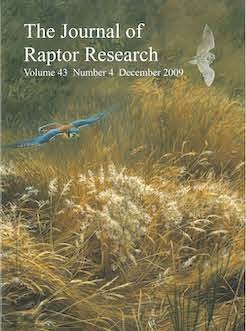We conducted a nest-box study from 1989–93 in north-central Florida, in an effort to increase the population of the threatened Southeastern American Kestrel (Falco sparverius paulus) and to evaluate the effect of providing artificial nest sites on the local population. A total of 388 nest boxes were erected in the experimental area. Over 75% of these nest boxes were placed >250 m away from roadside transects we established. This enabled us to measure changes in population density without the potential bias associated with the concentration of kestrels at specific nest-box sites. Annual censuses were conducted along 20 16-km transects to quantify population density in the control (no nest boxes) and treatment zones. Breeding attempts in nest boxes increased during each year of the study. Kestrel densities along the experimental transects increased from 5.0 birds/100 km2 to levels equivalent to the control zone within 3 yr of nest box placement (32.3 vs. 34.9 birds/100 km2). Kestrels preferred nest boxes in sandhill habitats over those in hammock habitats, and nesting attempts in sandhills had greater hatching rates, more fledglings produced, and greater overall nesting success. Compared with sites with nest boxes that were not used by kestrels, sites with selected nest boxes were characterized by having more longleaf pine (Pinus palustris), cabbage palm (Sabal palmetto), and ground cover <10 cm in height, and less broadleaf deciduous trees, oaks (Quercus spp.), roadside berms, hayfields, water, and gravel.
How to translate text using browser tools
1 December 2009
Southeastern American Kestrels Respond to an Increase in the Availability of Nest Cavities in North-Central Florida
John A. Smallwood,
Michael W. Collopy
ACCESS THE FULL ARTICLE

Journal of Raptor Research
Vol. 43 • No. 4
December 2009
Vol. 43 • No. 4
December 2009
breeding
density
Falco sparverius paulus
habitat
nest box
POPULATION GROWTH
Southeastern American Kestrel




